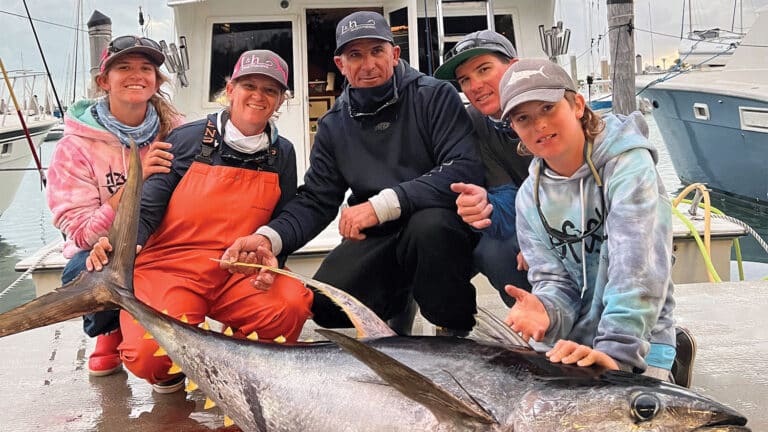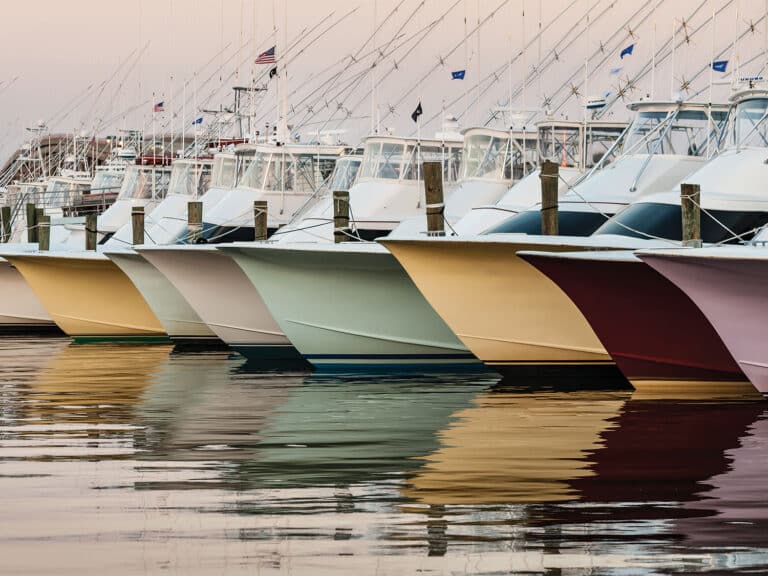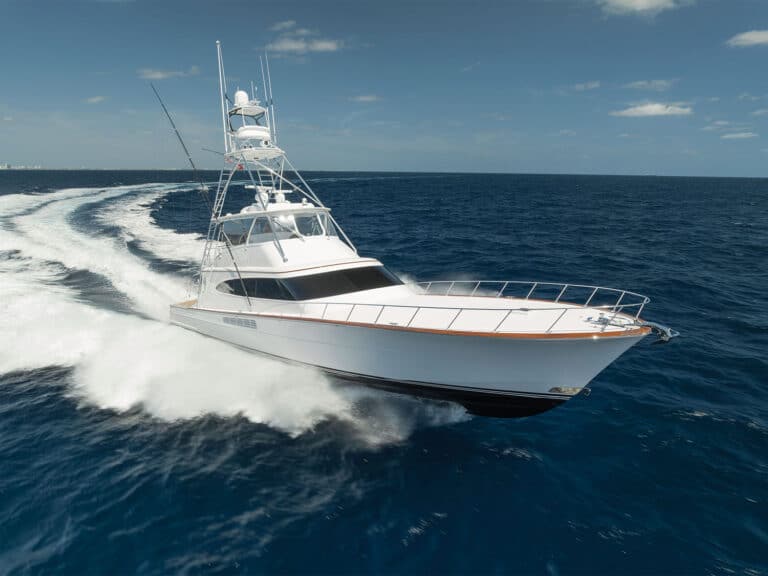
Hurricane
When the tropics start to light up and low-pressure systems start spinning off the African coast with regularity, it’s time to start paying attention and getting things ready on your rig, in case your location finds itself in the cross hairs of an approaching storm. The good news is, with all the great weather-forecasting tools available, you usually have plenty of time to prepare and take the steps necessary to secure your boats and property.
Along with the updates from the National Hurricane Center, I use an incredible app on my iPhone and iPad called Hurricane Tracker by EZ Apps. The app covers the Gulf, the Caribbean and the Atlantic Ocean, and comes loaded with National Hurricane Center-like storm model tracking maps; tropical wave info; NOAA weather radio; forecaster audio and video updates; push alerts for watches and warnings; threat-level maps; sea-temperature maps; real-time updates; and historical data of all the storms from the past several years.
Those of us who live along the eastern seaboard and Gulf Coast already know to break out the hurricane shutters, put the yard furniture away, and stock up on basic necessities during the active hurricane season, which officially lasts from June 1 through November. Your boat requires even more preparation and supplies.
We keep plenty of extra line in our storage unit for doubling up and securing the boats with a spider web of rope, including a couple of sections of anchor line, in case we are somewhere that requires us to run lines across a canal or another extended run. We cut sections of hose to use as chafe gear to protect the lines in the event that we are going around concrete, metal or trees. We also keep some chain sections around so we can make loops to go around hard surfaces and then attach our ropes to the chain.
All of these materials have been acquired over the years but have proved valuable in one or more situations at one time or another. Having these tools helps me to protect the boat in any number of situations.
When seeking a safe haven or hurricane hole, you need to scout it out prior to any storm warnings; once people get wind of an approaching storm, sheltered spaces start to fill up fast. First, see what plan your marina offers, if any, for haul out.
If you can haul out, be sure your marina or facility has a good plan and equipment to properly secure your boat. Many marinas rely on jack stands to set boats on during haul out; they are a great tool in most instances, but not so much during a hurricane. If you have to use them, make sure that they are tied or chained to each other under the boat and that they are on secure ground. If the stands are on dirt or gravel, be darn sure that there is no potential for moving water from rising tides or heavy rains, since they can be subject to undermining on soft soil. Undermining is when running or moving water starts to erode the dirt around the stand or blocks, making them unstable and incapable of holding the boat. When a stand is undermined, the boat falls over into the next boat and creates a domino effect, dislodging and upending entire rows of boats.
It’s imperative that you make sure the boat is tied down to the stands or blocks. When Hurricane Wilma came through several years ago, the wind blew so hard that a 58-foot Viking teetered on the jack stands at her aft corners; I saw it happen. The boat was moving around so much that, at times, it would separate completely from the aft stands. There was no danger of her going over, because she was tied down to her haul-out cars and the 40-foot cement pilings laid out on the ground next to her, which had PVC pipe running through them for tie downs. However, watching that boat rise ever so slightly, and the stands shuddering under her, it was easy to see how a boat could fall off the stands if it were not secured to something else.
If you have to stay in the water, evaluate the situation carefully. If at all possible, try to get at least 100 miles away from the eye of the storm. Getting farther away from the eye dramatically decreases your chances of sustaining damage. Choose a place where you can tie up securely that’s shielded from the full force of the wind and not subject to a lot of fetch.
Fetch is the unbroken distance over a body of water, such as a bay, river or harbor, that allows the wind to create a rougher sea state. A wind with a lot of fetch is capable of damaging docks and making it incredibly hard to keep a boat under control when tied up.
A wildly bobbing boat is more likely to break lines than one that is tied tight and not allowed to get too much momentum to break the lines. Make certain that you have enough scope to ride the tide up and down without letting you get on top of the pilings. If the predicted surge is going to put you over your pilings, move to another place inland or upriver — anywhere out of the path of the storm.
Be sure that your neighbor takes these same precautions as well; it only takes one boat to break loose and get into the other boats to create severe damage. Plan for the oncoming winds, but be darn sure that you are set up and ready for the shift off when the back side of the storm moves through. The shift off is when the wind comes from the other direction, and it can be just as treacherous as the leading edge of the storm. If you are going to stay aboard, be sure to tie the boat so that you can adjust the lines from the cleats; do not put the loops on the cleats, and make sure that you have doubled all lines. If you are going to tie her up and stay ashore, you may want to have the loops of your second set of lines on the boat so that you can adjust from the dock.
There are also several things you need to do to prep the boat properly. Make sure that you have enough fuel to run to a safer place and to run the generator if you are staying aboard — shore power will most likely go out.
Reducing windage is key to everything. You must reduce your exposure in order to minimize damage. Remove your outriggers; they cannot withstand the heavy winds of a storm, and we have seen many sets bent and broken from storms over the past several years. Lay down antennas and secure them to something on the boat. Remove your curtains; they will blow out anyway if you don’t.
Tape all the seams on your bridge cabinets to prevent water from entering them; without curtains, they will be exposed to hard driving rain that can force water into them. I’ve even seen the wind lift heavy lids and pull the hinge screws out.
Be certain that your insurance is up to date and that you are in compliance with your written hurricane plan if the insurance company requires one, as most do for boats that operate in the tropical-storm latitudes.
Obviously, there are some storms that come along, like Hugo, Andrew and Sandy, and hit with such force that no amount of preparation could keep you safe. However, with just a bit of planning, and the ability to get your boat out of harm’s way, you can spare your boat from the ravages of a superstorm.
Start your preparation now. Check with the marina for its plan and make sure that it’s prepared with the right gear to secure your boat once it’s on solid ground. Gather spare ropes and chafe gear and have them ready to load onto the boat when she is in the path of an approaching storm.
Do the best you can to secure the boat without putting someone in harm’s way. If at all possible, try to get your boat out of the path of the storm so that you can alleviate a direct hit. Do not try to be a hero and ride it out in the teeth of a storm. In the long run, the boat and property can be replaced; however, making the best effort to protect and keep her from breaking loose helps us all.







